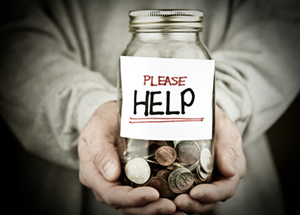GUEST BLOGGER
Laura Hymes, CFE
ACFE Managing Editor
Start ’em young, right? If a child wants to be a ballet dancer, pianist, scientist, or maybe even a CFE, standard practice is to start exposing him or her to the trade early in life. Ballerinas, for example, usually begin dance classes by the age of four or five. Budding astronomers probably ask their parents for a telescope at a young age. Future CFEs might enjoy having the Fraud Examiners Manual read to them at bedtime. But what about aspiring fraudsters? Are they just supposed to learn on the job once they reach adulthood?
A few young criminals in training seemed to think that was an unfair approach and took it upon themselves to start practicing early. Two teenagers and one 12-year-old are facing criminal charges for operating a charity fraud in Dunwoody, Georgia. The three created flyers highlighting fake fundraising efforts for their fake basketball team, the Panthers, and handed them out in a local shopping center. The flyers displayed that the young players were seeking donations for new uniforms and equipment, as well as the costs of traveling to Florida for upcoming championship playoffs. There was even a fake email address if donors wanted to contact the fake team mom.
Local police say they encounter this sort of scheme—run by children—about once a month. The shopping center is a popular target because it is busy during lunchtime with shoppers and diners who often give before they question the validity of the charity or fundraiser. And whether they know it or not, children can often elicit more sympathy from their adult targets, resulting in a more profitable scheme. Local police are encouraging residents to call the authorities if they suspect a charity fraud, and potential donors should treat anyone asking for money, no matter how young and innocent they appear, with proper due diligence before opening their wallets.
I’d love to hear thoughts from our anti-fraud community on this story. Do you think 12 years old is too young for criminal charges, or does this action send a strong deterrent message to other would-be fraudsters? How do you think you would have responded if a child approached you with this flyer while you were grabbing a quick lunch one day?





